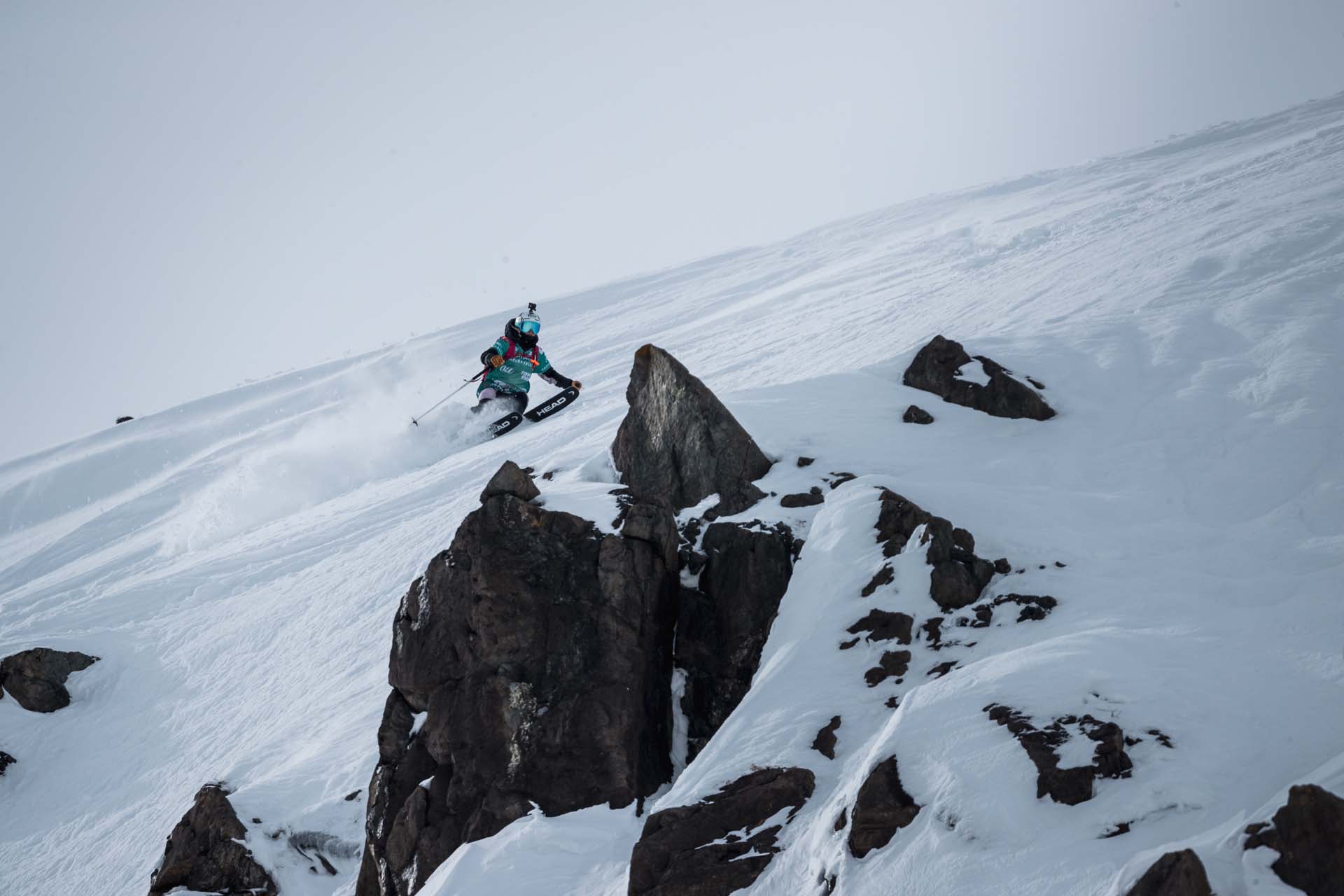
Event News
HighlightDrew Tabke, Hedwig Wessel victorious at FWT Hakuba
On a cool, blue-sky Sunday morning at the Kuzureizawa venue in Japan’s Hakuba Valley, 46 of the best freeriders on the planet kicked off the 2020 Freeride World Tour last weekend. Following a lengthy build-up, last-minute wildcard exchanges and lots of hype from the FWT organization and the athletes themselves, the competition went off—then was kept confidential for 24-48 hours?
No, seriously: the FWT blacked out all results information until their new “delayed format” competition stream went online at 9:00pm Monday evening in Europe, more than 24 hours after the event actually finished—meaning fans in Tokyo, Japan had to wait until 5:00am on Tuesday to watch a freeride competition that had taken place four hours away. Even athletes’ social media channels were silent regarding the contest in Hakuba until after the broadcast. The shift away from live broadcasts was met with chagrin from fans, who took to the FWT’s social media channels to express their frustration and confusion.

The new, improved, condensed and delayed competition broadcast from Hakuba. (YouTube)
This is certainly not the first time the FWT has made questionable decisions and been met with pushback from fans. CEO Nicholas Hale-Woods explained the decision: “Here in Japan and in Canada, often weather windows are super short. If you look at the weather forecast during the week, there’s two small windows of three hours and you have to be ready at that time. If you’re not ready and you have delays because the live webcast infrastructure is super heavy to move around, then you pass that window and the riders have to ride in flat light in not ideal conditions, and we wanted to avoid that.” In addition, the new format is meant to allow for time to edit and condense the contest replay. For example, athletes’ GoPro footage can be shown immediately after their run, and lengthy delays—such as when an athlete loses a ski and has to hike back up the hill to retrieve it—can be cut out.
At its best, the new format allows the FWT media operation a smoother and more rapid response to constantly changing weather, thus giving athletes fair competition conditions while allowing for a more condensed, exciting and complete picture of the competition. At its worst, it’s a complete monopoly of media and information surrounding competitions, allowing the FWT to dole out updates as they see fit, and an opportunity to edit footage to insert things like advertising placements.
But enough about the broadcasting format, let’s get to the real reason we’re all here: the skiing.
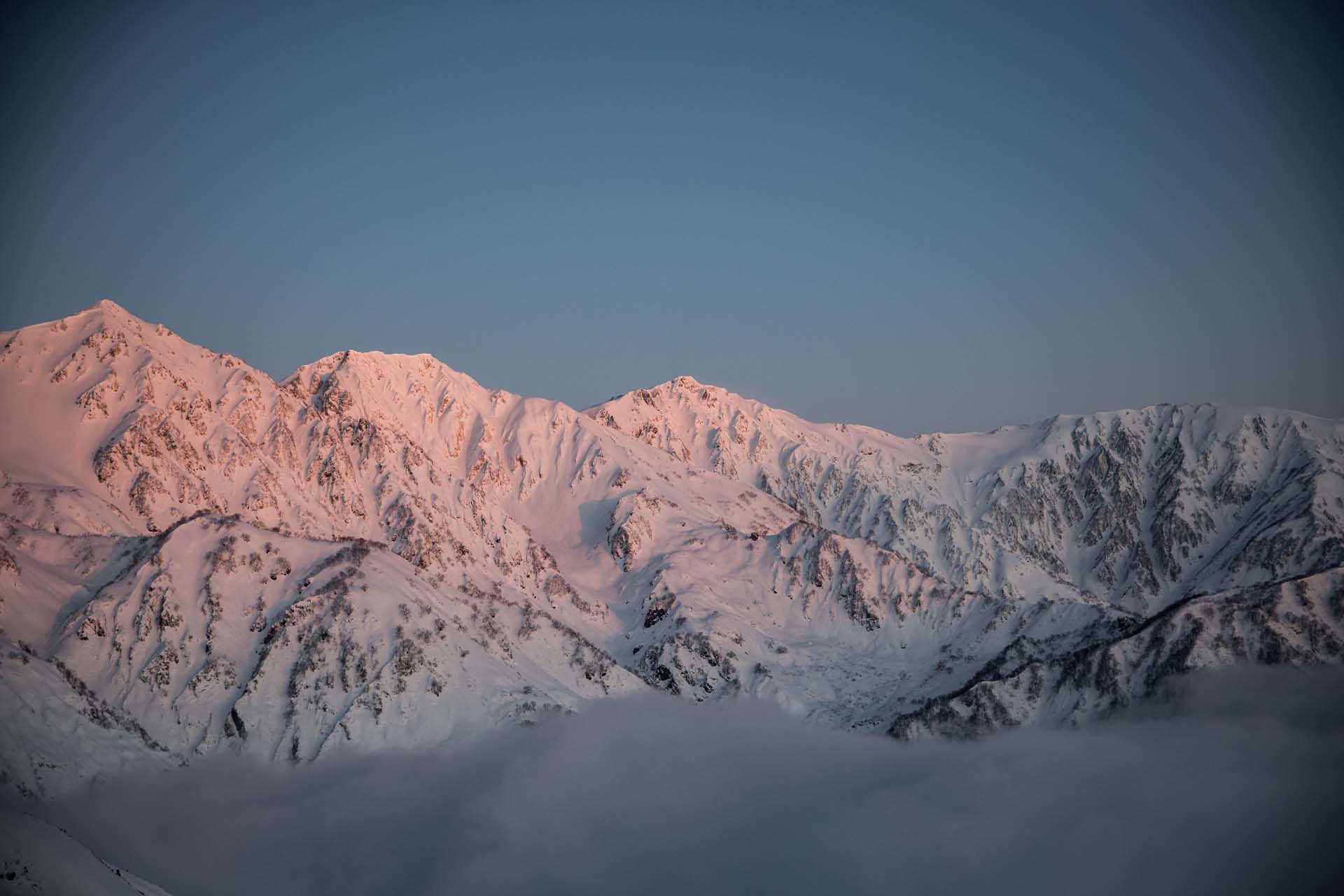
Sunrise in Hakuba. If anyone ever tells you "skiing in Japan is flat," they probably haven´t been to the Japan Alps yet. Photo: Dom Daher/FWT
Ski Men
Japan is having a relatively weak January in terms of snowfall. This showed on the competition face, which held a collection of more variable snow than the powder-filled Hakuba competitions of years prior. This year showcased a new venue that no FWT rider had competed upon before, leveling the playing field somewhat between rookies and veterans.

The new venue in Hakuba offered riders a variety of terrain, from steep cliff zones to playfully featured open sections.
Following the ten male snowboarders, the 21 competitors in the Men’s Ski category were treated to a relatively untouched competition face. From the outset it was clear that the state of freeride is changing: nearly every men’s run featured either a 360, a backflip or both. Flips and spins, long regarded as the “cherry on top” of an otherwise strong freeride run, have become an integral part of a winning line. The tricks came to define the Hakuba competition.
Kiwi rider Craig Murray set the tone for the day with a big 360 off a cliff at the top of the venue and fast, fluid skiing through to the bottom. Ski Boss Tanner Hall capitalized on the playful terrain and launched a monstrous flat 3 japan off a cliff midway down the face, but got high-sided at speed, crashed and tomahawked. With a floaty 360 up top and another to the opposite direction further down, American Teton Gravity Research athlete Tim Durtschi had no trouble under the competition spotlight. Durtschi has essentially made a film career throwing doubles in the backcountry—between him and the Ski Boss, could this be the year we finally see a double in a competitive freeride setting?
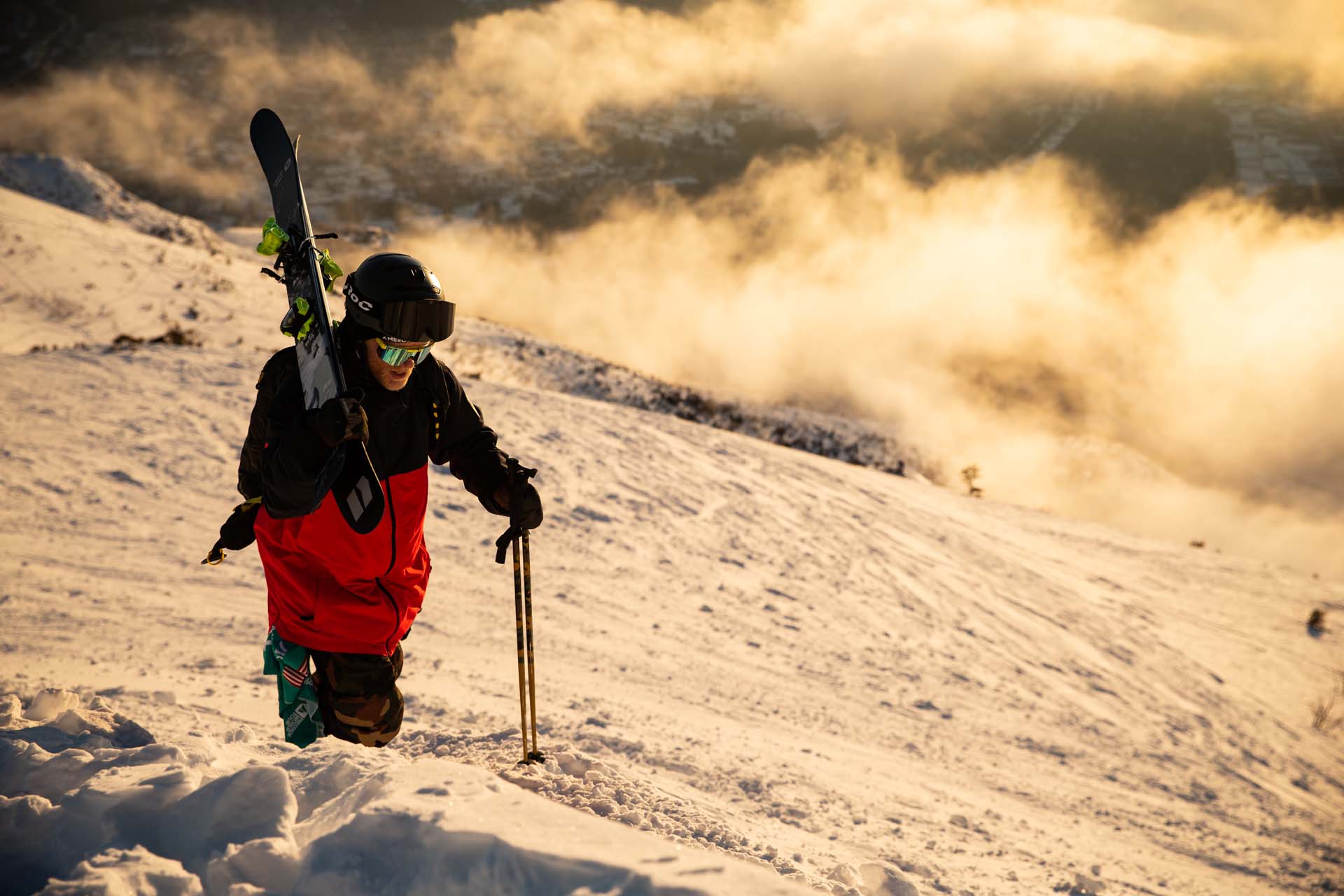
Ski Boss in the house. Photo: Dom Daher/FWT
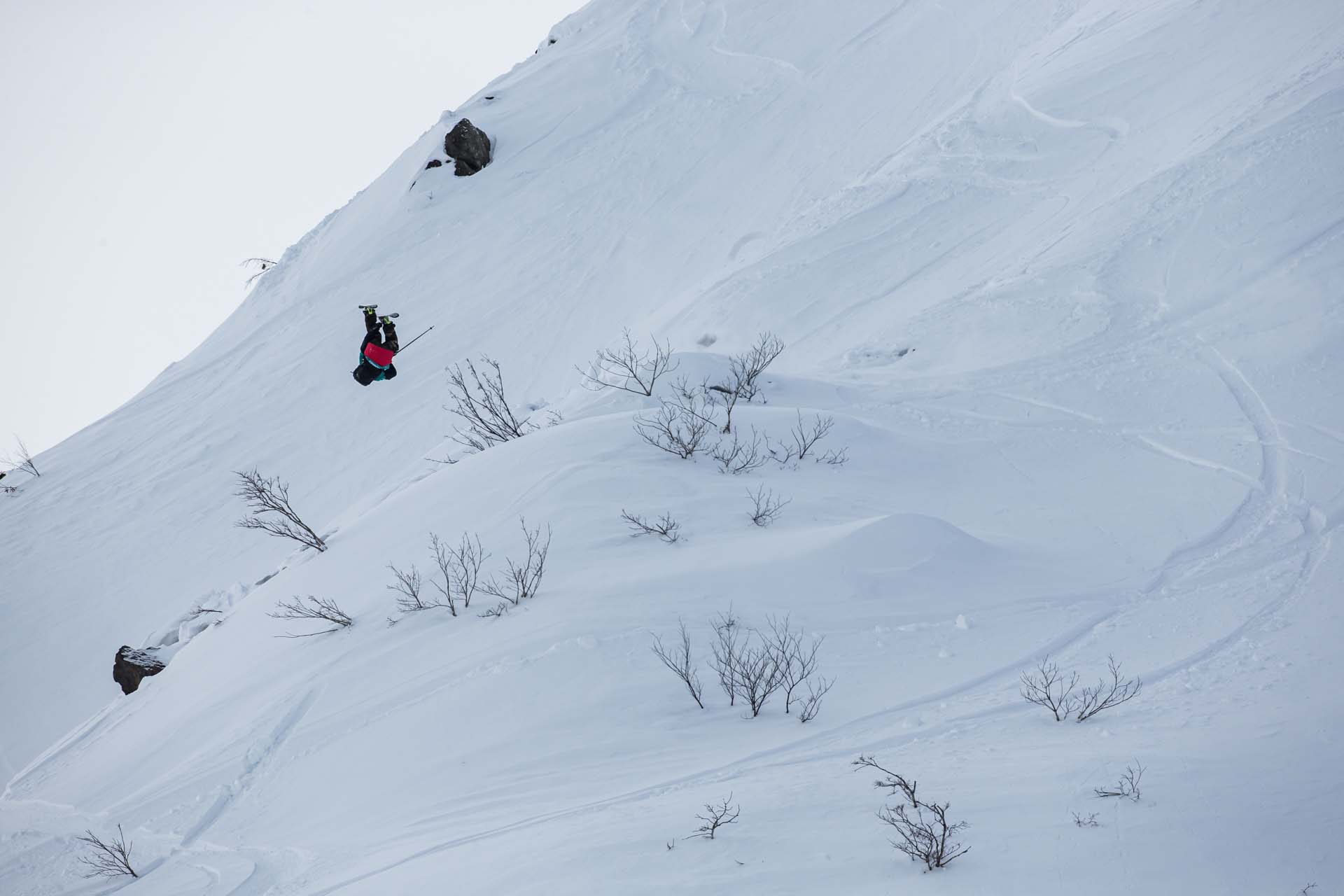
Tanner had what looked like a podium run on his hands, until he got bucked at high speed. Photo: Dom Daher/FWT
For some of the men, the Hakuba stop was a chance to test their rotations and spins in a big-mountain setting. Carl Renvall and Blake Marshall both somehow managed to squeeze 1080 degrees of rotations in their runs, with three 360s apiece. For other athletes like Yann Rausis, Konstanin Ottner, Ivan Malakov and Hank Bilous, it was a chance to test the limits of their bodies, since all have recently returned from injuries.
For the squad of young Americans new to the Tour, it was a chance to establish themselves on the world’s freeride stage and prove their mettle after qualifying on the challenging American circuit. In his rookie debut, Isaac Freeland landed in fifth using a new combination of cliffs, spins and transfers. Just ahead of him, last season’s Rookie of the Year Andrew Pollard also showed his creativity, linking new cliffs and features untouched by previous riders with spins and airs.
Meanwhile, FWT veteran Reine Barkered gave judges the “best of both worlds,” mixing a massive backflip up top with traditional technical big mountain skiing through the “Horseshoe” cliff band below. One of the day’s highlights came from rookie Hank Bilous of New Zealand, who started his run with a frontflip off the ridge, then proceeded to gap an entire couloir on a cross-hill transfer air, linked immediately into a 360 for good measure. His explosive run landed him in second place.
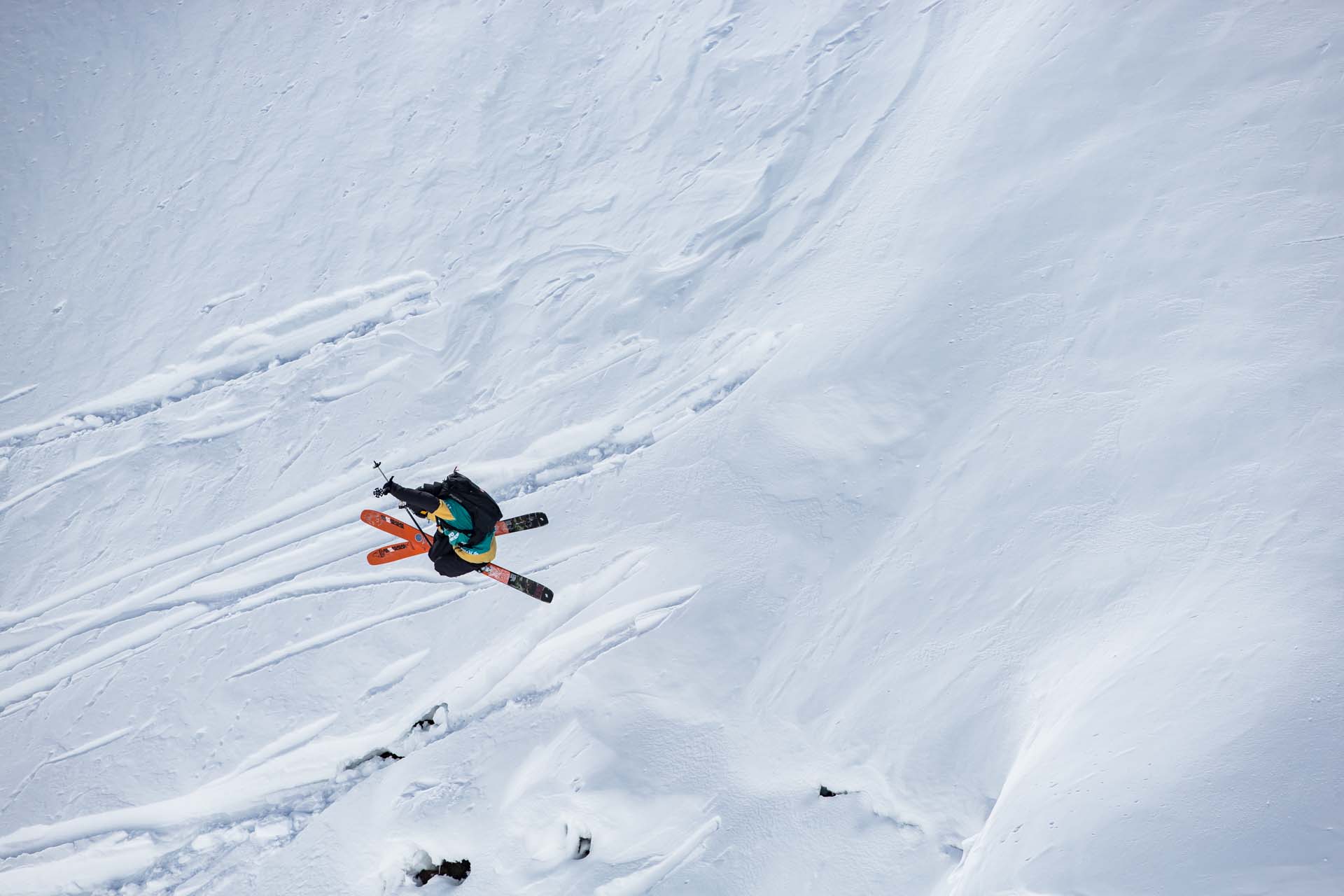
Seen here at the bottom of his run, FWT rookie Hank Bilous launched an insane gap that might have been the highlight of the day. Photo: Dom Daher/FWT
However, it wasn’t quite enough to displace tour veteran Drew Tabke from the hot seat. With a sizeable backflip, technical features, and a combination of numerous, stylish airs with full control throughout, Tabke emerged the ski men’s victor of in Hakuba. Though it’s not his first victory, the 35-year-old American hasn’t stood on the top step of the FWT podium since 2017.
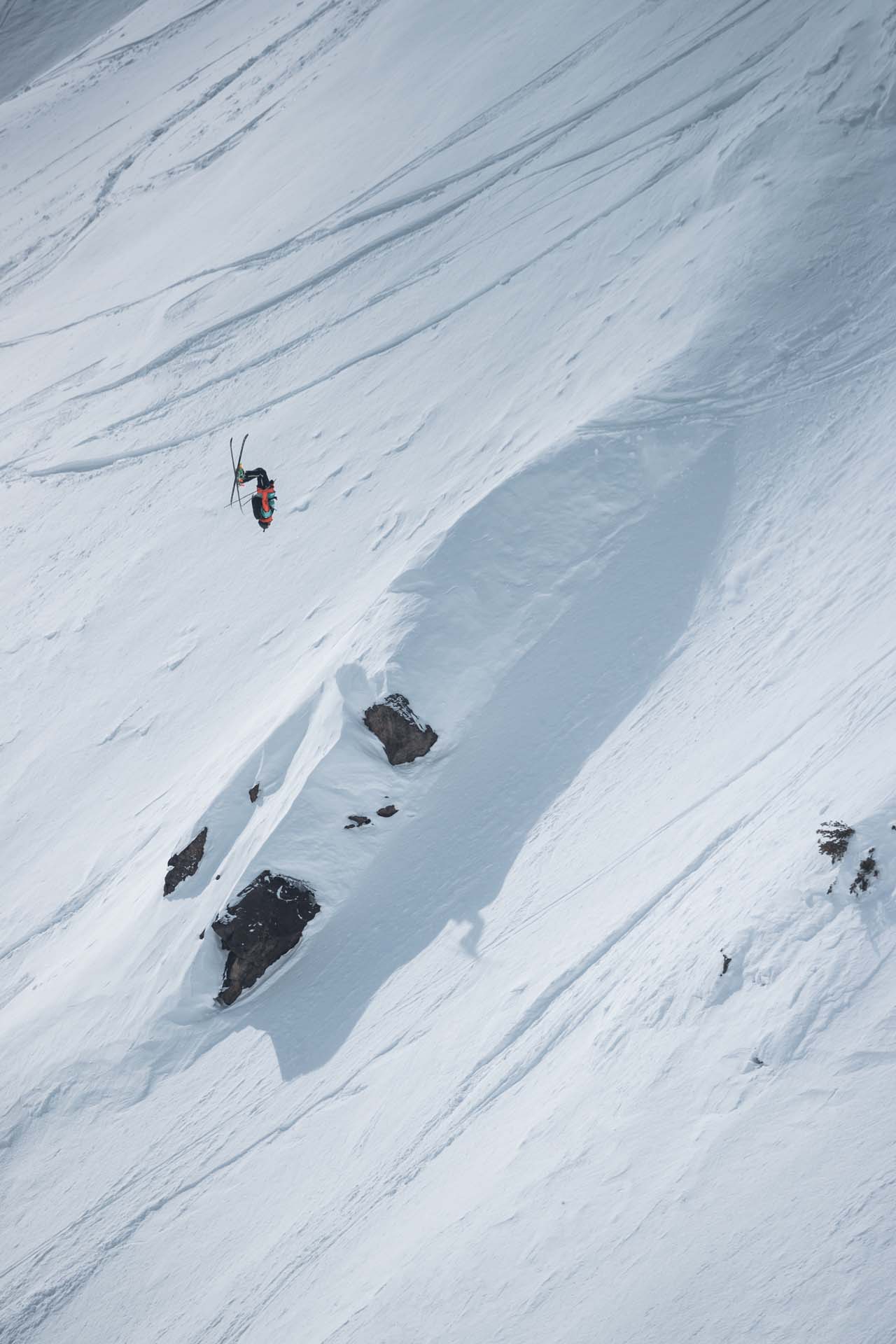
Drew Tabke´s winning run was all class and composure, even in the middle of this massive backie. Photo: Jeremy Bernard/FWT

Drew Tabke´s winning run: speed, style and a huge backflip. (YouTube)
Ski Women
Last week the FWT announced equal prize money parity, meaning they’ll pay all winners the same, regardless of gender. This was the first contest with the new prize structure, where the women, for the first time in Freeride World Tour history, would receive the same winnings as men for their performances.
The Ski Women were the last group to kick out of the start gate. Following 36 athletes, the competition face was pocked and traversed with bombholes and tracks. Undeterred, the ten ski women still put on a show.
Emma Patterson led the field, and sent a steep chute-cliff combo in the same “Horseshoe” cliff area where Tabke and Barkered found success. After stomping the cliff and flying out at Mach 10, Patterson exploded into a puff of white smoke, tomahawking viciously down the face. She crashed with such force and velocity that her avalanche airbag was ripped open. Fortunately, she seemed unharmed after the wild ride.
Jacqueline Pollard, last season’s Rookie of the Year, started with a strong top section, but got caught up and crashed in some variable snow trying to avoid a rock in a landing further down the face. Attempting to add some freestyle to her run, Jackie Paaso got caught up on the take off of a 360, and crashed as well.
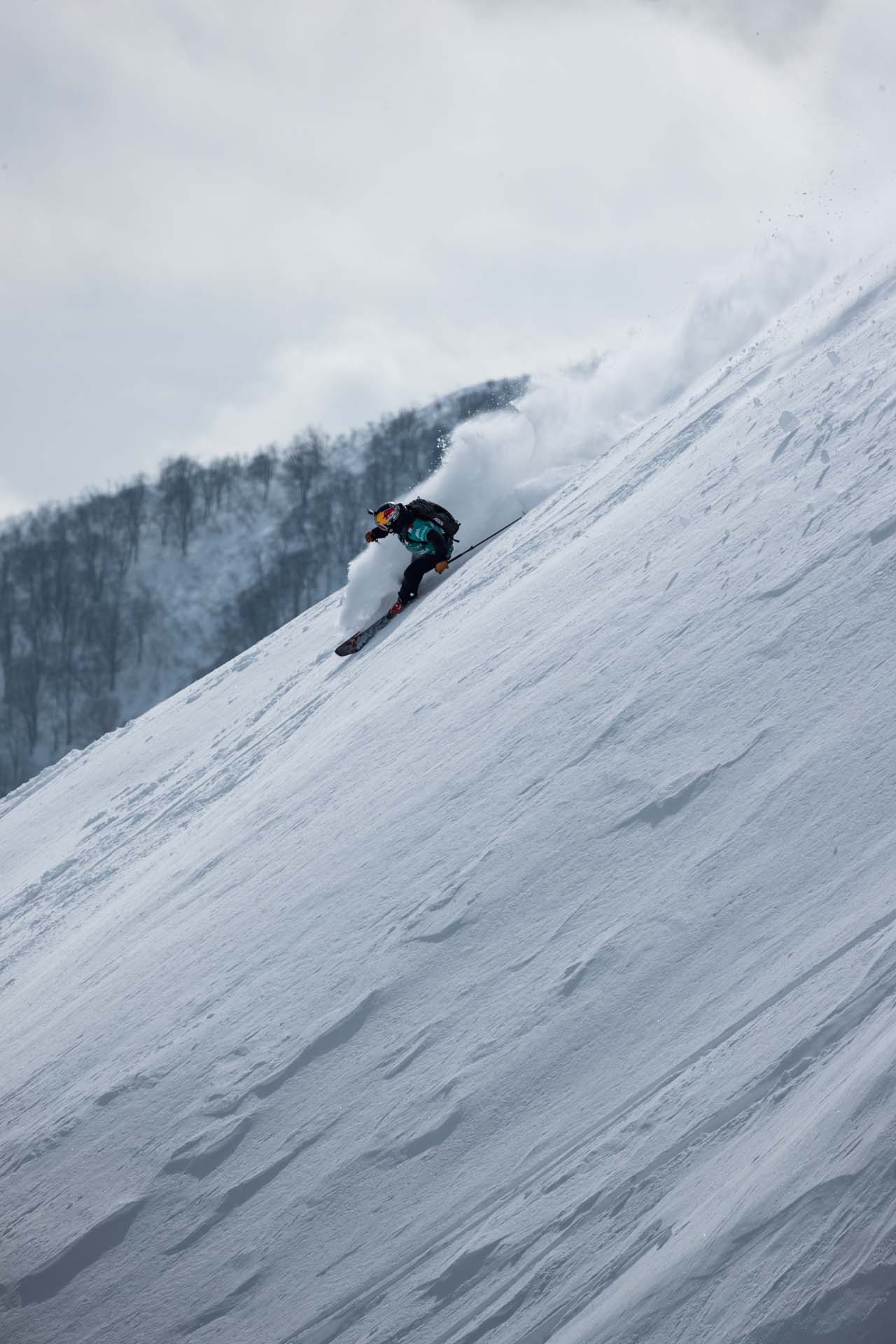
Despite stomping her biggest and cleanest 360 yet in a contest, Arianna Tricomi had to settle for second place this time around. Photo: Jeremy Bernard/FWT
Japanese rider and former World Cup halfpipe athlete Ayana Onozuka rode solidly and fluidly through several cliffs, and into fifth place—a big improvement on her run in Hakuba last year, when she got hung up and lost a ski. In fourth, Juliette Willmann from France creatively weaved several technical cliff drops together, while Switzerland’s Elisabeth Gerritzen took a fluid approach through several cliffs, linking enough solid features in a smooth line to land in third.
Reigning FWT champion Arianna Tricomi showed why she’s the champ, combining several airs up top with a big 360, in a bouncy, playful, fluid run. The combo of spins and cliffs landed her in second place. The star of the show, however, was Norway’s Hedvig Wessel. The former World Cup moguls skier aired off two cliffs up top, then fired off one of the biggest backflips of the day, looking like she was going to overrate before somehow stomping clean, and flashing the rest of the venue.
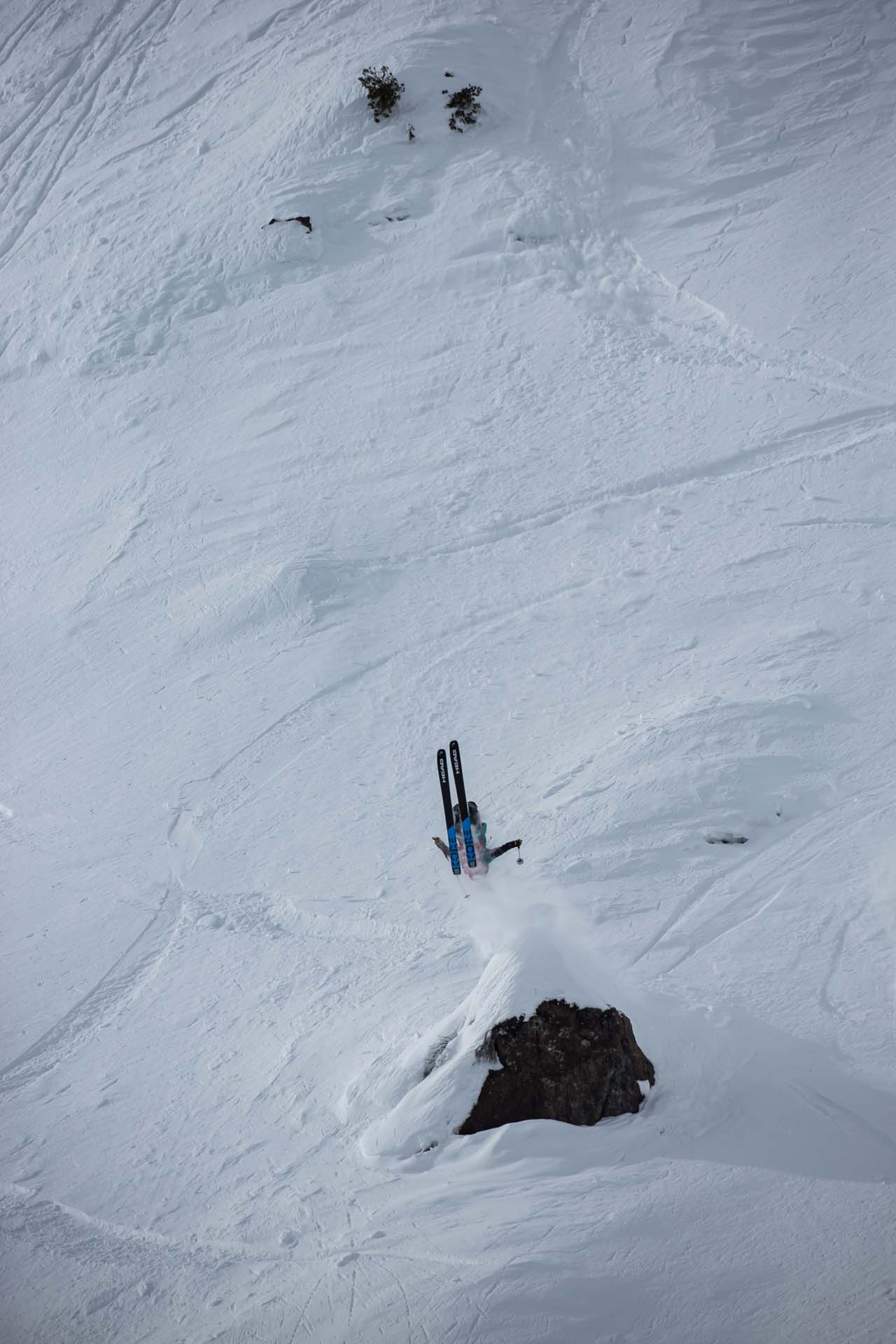
Hedwig didn´t hold back on this massive backflip off an untracked wu-tanger. Photo: Dom Daher/FWT

Hedwig takes the win with what´s undoubtedly the biggest trick sent by a women in a freeride contest yet. (YouTube)
That’s the word from Hakuba. The tricks are more important than ever, the women are ready to send it for their increased prize purse, and if you don’t mind waiting a few days after the contest, the delayed stream (which will also be used at the Canada stop) now makes watching the contest a most concise and consistent affair.
The Freeride World Tour now heads to Canada for the next tour stop in Kicking Horse from February 6-12. You can keep up on all the tour happenings at freerideworldtour.com.
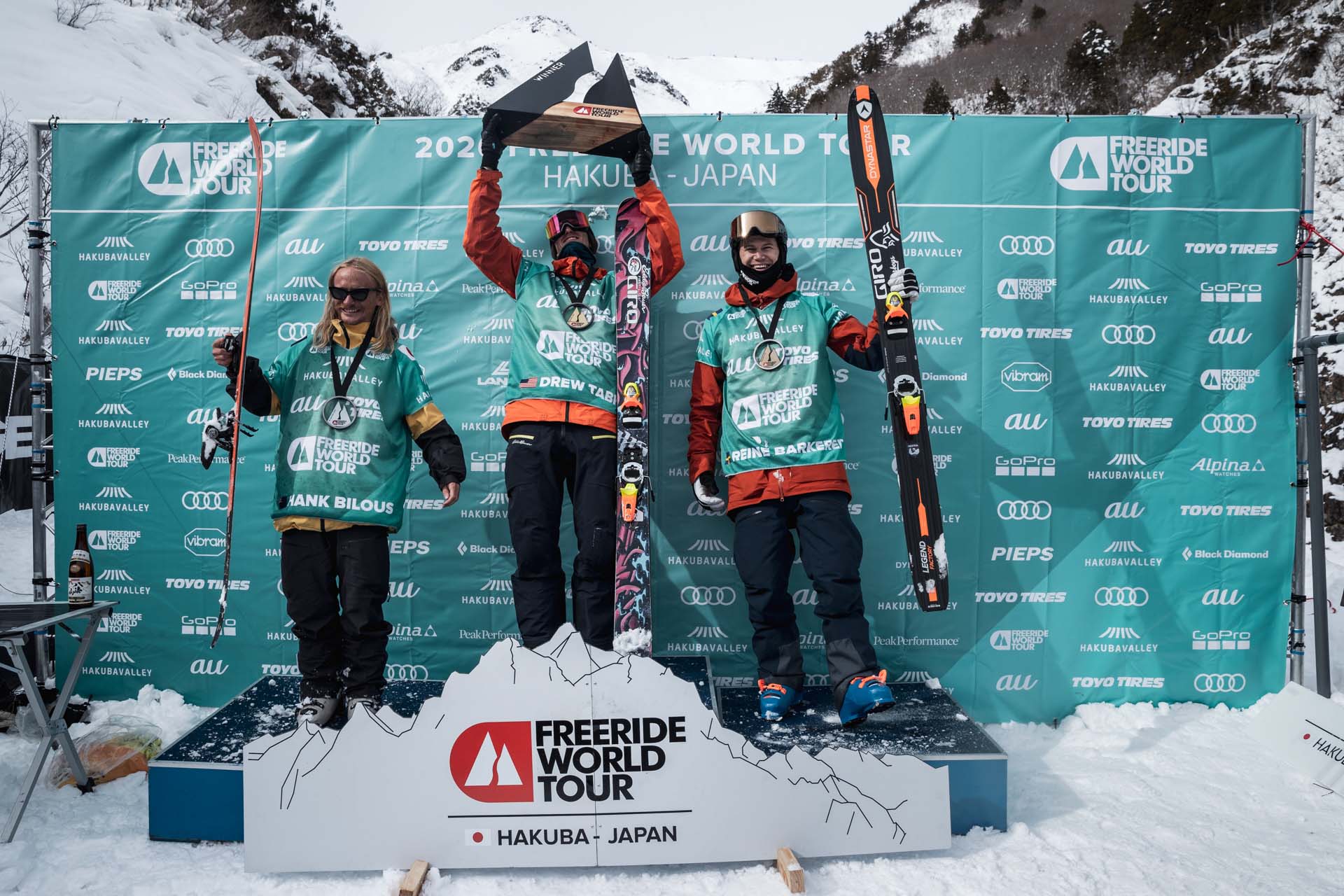
Hakuba FWT men´s podium: Drew Tabke (1), Hank Bilous (2), Reine Barkered (3). Photo: Jeremy Bernard/FWT
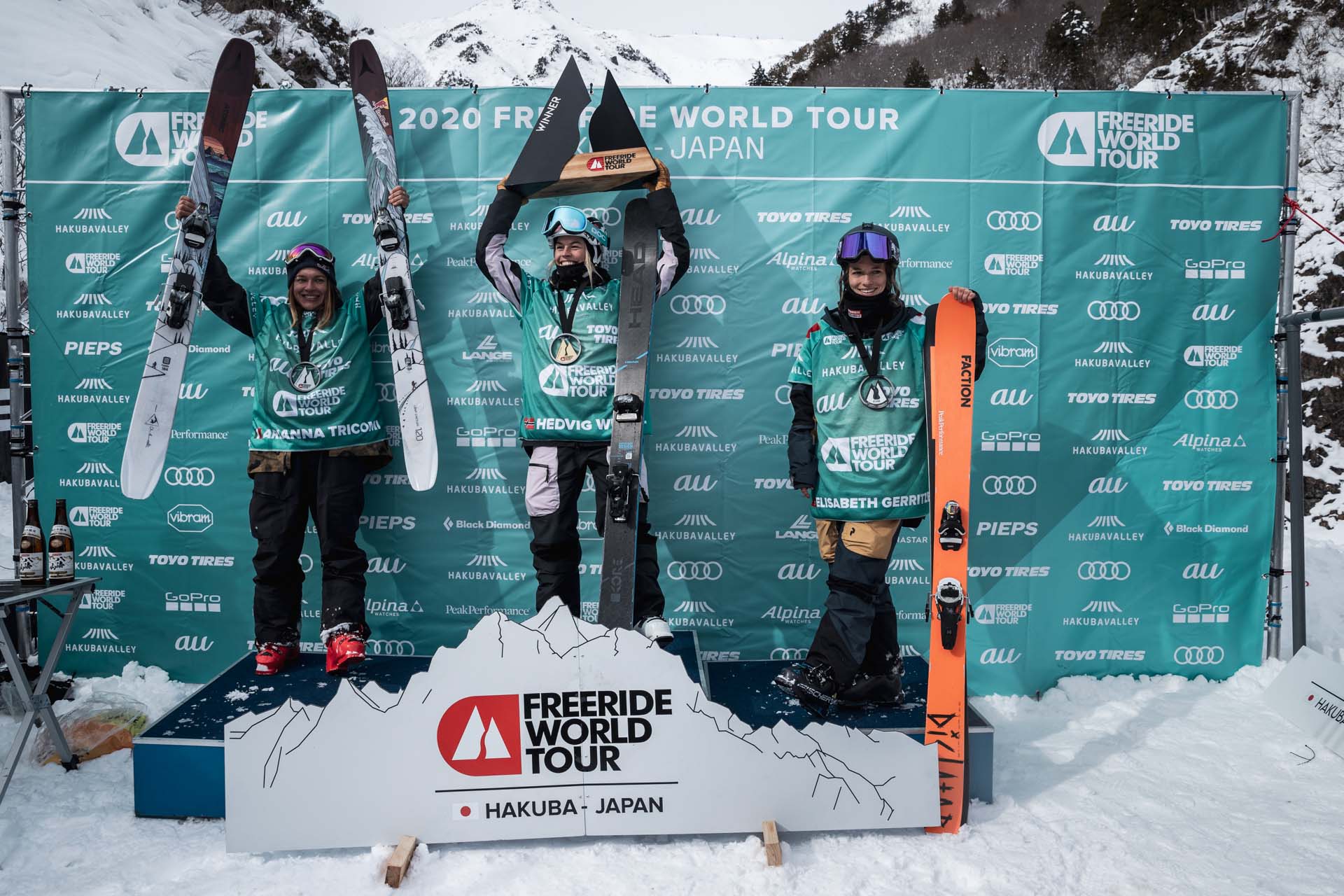
Hakuba FWT women´s podium: Hedwig Wessel (1), Arianna Tricomi (2), Elisabeth Gerritzen (3). Photo: Jeremy Bernard/FWT